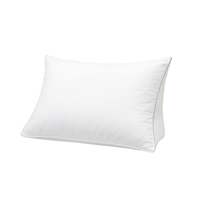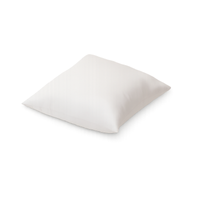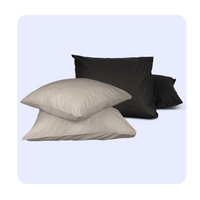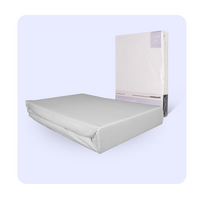When you're making your bed, you'll come across two common terms: duvet cover and duvet without a cover. Even though they're closely related, they actually serve different purposes in your bedding. In this blog, we'll explain what the difference is and why a duvet without a cover can often be the better choice.
What is a Duvet Without a Cover?
A duvet without a cover, often just called a "duvet," is a thick, insulating piece of bedding filled with materials like down, feathers, wool, or synthetic fibers. This duvet is made to keep you warm and comfy while you sleep. Duvets come in different warmth levels, so you can pick a lighter one for summer and a thicker one for winter.
Benefits of a Duvet Without a Cover:
- Warmth: It gives you awesome insulation, so you stay nice and warm all night.
- Comfort: The soft filling gives you a luxurious and comfy sleep experience.
- Ease of Use: Not having a cover means less hassle when making your bed.
What Is a Duvet Cover?
A duvet cover is a big sleeve that you pull over your duvet. It usually has an opening on one side where you can slide the duvet in and then close it with buttons, a zipper, or snaps. The duvet cover does a few things: it protects your duvet from dirt and wear, and it adds a nice touch to your bedding.
Benefits of a Duvet Cover:
- Protection: It keeps your duvet clean and free from sweat, dust, and stains.
- Hygiene: It's easier to wash than the duvet itself, which helps keep your sleeping space fresh.
- Style: With a duvet cover, you can easily switch up the vibe of your bedroom by picking different designs and colors.
Why Choose a Duvet Without a Cover?
Even though duvet covers have their perks, there are plenty of reasons why you might want to go for a duvet without a cover.
-
Direct Comfort: A duvet without a cover lets you feel the soft, luxurious materials of the duvet itself right away. For a lot of people, this feels way comfier than the fabric of a cover.
-
Simplicity: Making your bed is way faster and easier without the hassle of a cover. This is especially handy for people with a busy lifestyle.
-
Looks: A nice duvet can already be a stylish addition to your bedroom, even without a cover on it.
-
Care: Even though you can't wash the duvet as often as a cover, there are plenty of duvets that are specially treated to be hypoallergenic and repel dirt.
Conclusion
The difference between a duvet cover and a duvet without a cover is mainly in their function and how you use them. A duvet without a cover gives you instant comfort and keeps things simple, while a duvet cover adds extra protection and style. For a lot of people, a duvet without a cover is actually the better choice because it feels more comfortable right away and is super easy to use. Whether you go for a duvet with or without a cover, the most important thing is that your bedding helps you get a good night's sleep.

















 Continue shopping
Continue shopping






